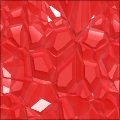Join Our Community!
Filter Forge has a thriving, vibrant, knowledgeable user community. Feel free to join us and have fun!
33,739 Registered Users
+5 new in 7 days!
153,586 Posts
+8 new in 7 days!
15,356 Topics
+6 new in 30 days!
Online Users Last minute:
12 unregistered users.
Recent Forum Posts:
- Affinity V3 by CFandM
yesterday - CPU and GPU rendering choices by GMM
November 4, 2025 - Unable to save projects by GMM
November 4, 2025 - FYI Filter Forge 14 works in Affinity 3.x (Mac) by Cassel
November 2, 2025 - Text Circular Art by Ramlyn by Ramlyn
October 27, 2025 - Filter Forge 14 will not load into Adobe Photoshop version 26.2.0 by CFandM
October 24, 2025 - FF7 unable to update or download Filters by GMM
October 22, 2025 - Chaos Fields by Rachel Duim
October 15, 2025 - The Render Animation output goes almost pink by einfach Alberto
October 15, 2025 - Ultra forge and the Mac by DigitalWheelie
October 8, 2025 - Successfully Looping An Animation by Rachel Duim
October 4, 2025 - Multi Image Stacked Swirl by CFandM by CFandM
September 30, 2025

